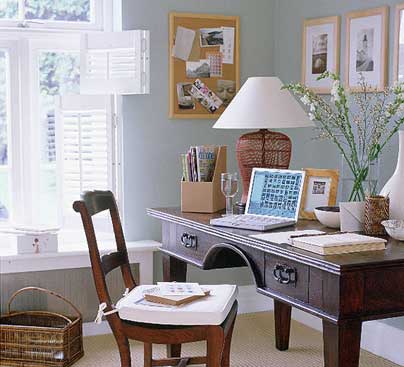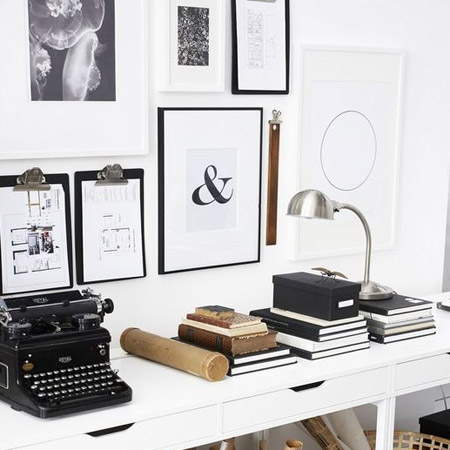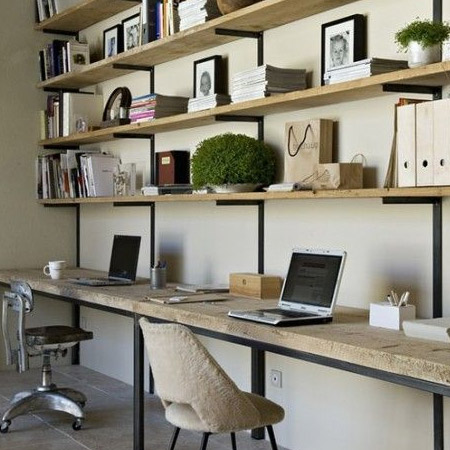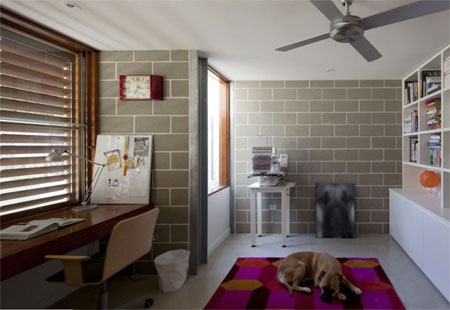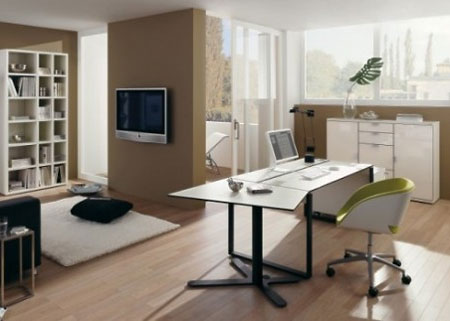Home office ideas
With more professionals packing up their laptops and heading for home, the Home Office needs to be a space that not only looks good, but works as well!
Once you've made the decision to start working from home you're going to need a home office; sharing the kitchen table just doesn't cut it. Of course you home office doesn't have to be a whole room, it can be a desk where you can keep your home based business materials organised and they'll stay undisturbed when you're not working.
Whatever space you are able to set aside, a separate work space helps you separate your work life from your home life. Entering your home office mentally prepares you to go to work, and establishes a distance (no matter how small) between ‘work’ and ‘home’.
Whether your home has a built-in study that functions as your office, or you've opted to convert a spare bedroom, with a little forethought the office's appearance can be integrated with the existing home decor to create a functional space that is also aesthetically pleasing.
Make any room work
Your home 'work' space should be no different from your previous 'office' space. You need to be able to sit down in your home office and go to work, without having to clear a space or hunt for a particular piece of paper. Getting your home office organised and keeping it that way prevents distractions and time-wasting.
A matter of choice
Most people choose to work at home, not simply out of necessity, but because it allows them to be something they cannot be in a corporate office. For this reason, decorating the home office is an exercise in self-expression. The more successful you are in reflecting your personality in your home workplace, the more you'll find it becomes a place you gravitate toward, rather than just go to.
pinterest.com/pin/365002744794782859/
Add personality
Personalise your home office with a few family or personal items such as photographs or decorative objects. These items will help to brighten up the space and make it more visually interesting.
pinterest.com/pin/124904589642766237/
Get organised
To be effectively organised you will need sufficient storage. Start off with the small items such as filing trays, an in and out basket and a wastepaper basket. Once you've got the small items sorted move onto the larger storage furniture such as a filing cabinet, shelving and drawer units.
Going to work
No matter what type of home based business you operate, you need to be able to concentrate to work at home. Make sure that all family members are aware that you are 'going to work' and ask them not to interrupt you unless absolutely necessary. If you have small children, the best thing to do is have someone else watch them while you work at home.
Choosing colour
The majority of home offices are boring and plain and one of the least esthetically pleasing rooms in your home. If your home office falls into this category, here are some design tips to transform your home office into a place you enjoy spending time in!
The main problem in designing a home office is that it tends to lack personality. They are utilitarian in layout and colour. I don’t know about you, but I spend a lot more time working in my home office than I do watching TV! Did you know your working environment has a large impact on your productivity, creativity and energy levels? For many of us it also effects our perception of our personal success and our confidence level. Clutter and an uninspiring space can wreck havoc on your business goals.
1. Before you tackle the design and decorating, set some time aside to clean up your clutter and get organized. If you simply cannot bear to deal with this yourself, or don't want to, call in a professional organization expert who will design a plan that is personalized to you and your workflow. You don’t have to be great at everything; you just need to know who to call.
2. Be inspired in the design process. If you have no idea where to start begin with a piece of artwork, an area rug, a lamp, an accessory or an upholstered chair that speaks to you. Then build the style of the room and the colour palette based on what you love and what you already have.
3. By choosing a piece of inspiration to guide you in your style and colour palette, selecting colours for the room will be far less complicated and confusing. It is easier to find a wall colour to match an item than find items to match a wall colour.
4. Before taking home litres of paint, know that colours are far more intense than they seem on a small colour swatch. You might want to move down the colour swatch a shade or two lighter than your first choice - the walls don't have to scream colour to be interesting!


